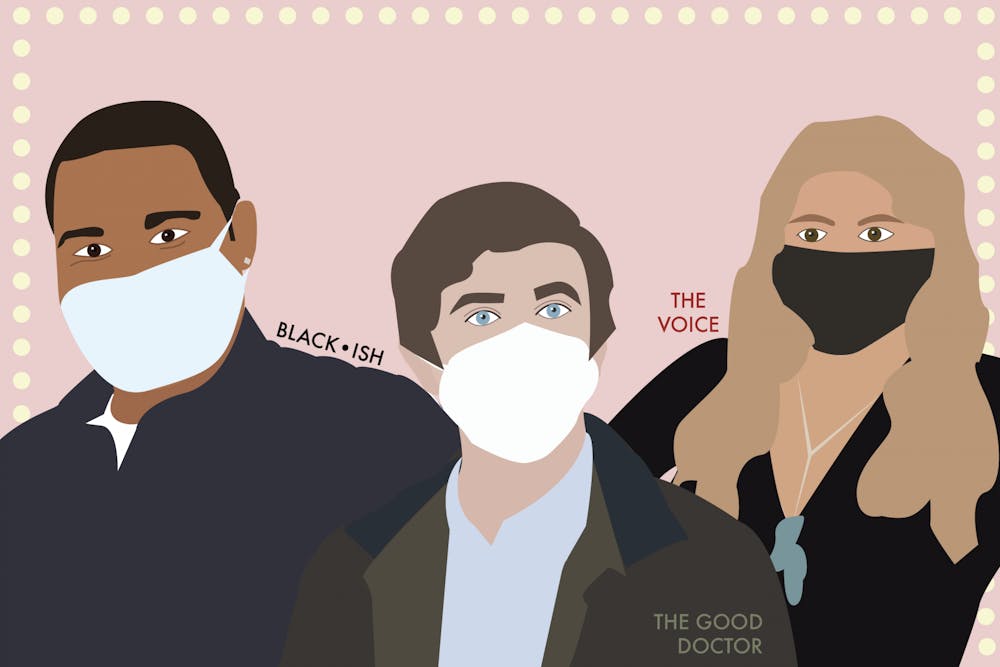The season premiere of the ABC hospital procedural The Good Doctor kicked off its season premiere with a coughing woman in a coffee shop; the rest of the two–part show goes on to chronicle the first few months of the pandemic through the eyes of the show’s characters. On screen the pandemic escalates from ominous warning signs to patients with contradicting symptoms, then a shortage of tests and supplies and no shortage of confusion, trauma, and grief. It’s a menacing depiction of the beginnings of the pandemic, the impact on healthcare workers, and the deeply saddening stories of patients and their families, a heartbreaking reminder of the trauma that continues in the real world.
While back in March and April, COVID–19 reports saturated our news feeds, these days stories of those on the frontlines seem to have faded into the background. Leave it to cable television to remind us that we are still in fact in the midst of a very dire pandemic. In addition to medical dramas like The Good Doctor and Grey’s Anatomy, other primetime shows like Blackish and This is Us have also weaved COVID–19 into their plotlines. To quote the message that flashed across the screen at the beginning of The Good Doctor, mainstream television shows that are premiering pandemic–themed episodes portray “a made–up story about a real battle still being fought.” But beyond the narrative representation of COVID–19, what are we really gaining by fictionalizing a pandemic which is still far from being over?
Dramatizations of the very real and very personal grief of healthcare workers and those dealing with personal loss to the disease are gripping and graphic. When Americans are still experiencing this loss and trauma every day, watching fictional versions unfold on TV is a terrifying reminder of the reality of the pandemic. With epidemiological experts are predicting a continuing rise in cases this winter and a widely–available vaccine still at least several months away, the pandemic is bound only to get worse. Yet in many realms of life, things have seemingly gone back to normal; maybe Americans need to see their favorite characters enduring the pandemic to take it as the serious threat that it is.
At the same time, much of the commentary in these pandemic–themed TV shows is a bit dated; primetime scripted cable simply can’t keep up with the pace of the 2020 media cycle. Watching a fictional version of something that happened in June — which in pandemic time may as well have been last year — seems stale. Jokes about Zoom calls, wearing masks, and not being able to hug or shake hands already feel cliché. An emotional scene when a patient formerly on a ventilator gets to go home doesn’t quite have the same landing as it did when it was an uplifting news story back in the spring. Especially when much of the social critique these shows are attempting to portray were already exhausted by late night hosts and Twitter months ago, network television is cursed with a timestamp even when they’re trying to write timely story arcs. The fast–paced reality of the 2020 news cycle was not made to be written into the plots of mainstream ABC and NBC shows.
You also can’t help but wonder whether television networks are taking the situation they’re portraying seriously themselves. The ethics and safety of filming these pandemic–centered storylines feels fraught. Though medical dramas like The Good Doctor and Grey’s Anatomy are particularly well–positioned to film in a pandemic because the people onscreen can wear PPE, the large casts and crews of these shows are inevitably still being put at risk. Not only is safety a concern, but it’s difficult to justify spending millions on production to film stories about a fictional version of the pandemic when in real life hospitals are running out of beds and Americans are grappling with a recession. Though the producers of these shows have actually donated some of their props as supplies to real–life hospitals, it’s hard to believe that we’re really spending money on television production in the midst of a national health crisis. There’s a certain discord in the cautioning message these pandemic stories tell and the actual practice of their existence.
Then again, network TV is already struggling in the age of streaming; there may not have been much of a choice but to recommence production of their highest–rated shows. Perhaps the more flexible production schedules of streaming platforms will lend themselves better to the chaos and uncertainty of the pandemic, but when cable TV networks are already decreasing viewership, they had little choice but to resume production of their most lucrative shows. But in the long–run, it’s questionable how long these pandemic–themed shows can be sustained. This pandemic may not be going away any time soon, but viewers may only watch characters struggle with quarantine and caring for COVID–19 patients for so long. There’s only so much that people want to watch fictionalized news stories and reflections of their reality; television is often an escape, but when it portrays the stress of the pandemic, it may just be the opposite. At a certain point, writers may need to end their fictionalized pandemics — or in some cases, just skip the pandemic in their stories altogether.
In the real world though, we can’t end the pandemic when it’s convenient to our story; for the foreseeable future, we must endure it. Undoubtedly we’ll be watching more TV as the winter months approach, cases rise, and we prepare for a second lockdown. Hollywood wants to feed us dramatizations of the pandemic we’re still living through, but maybe it’s too soon to invest so much into these COVID narratives when we’re still far from the end of the real–life pandemic.







